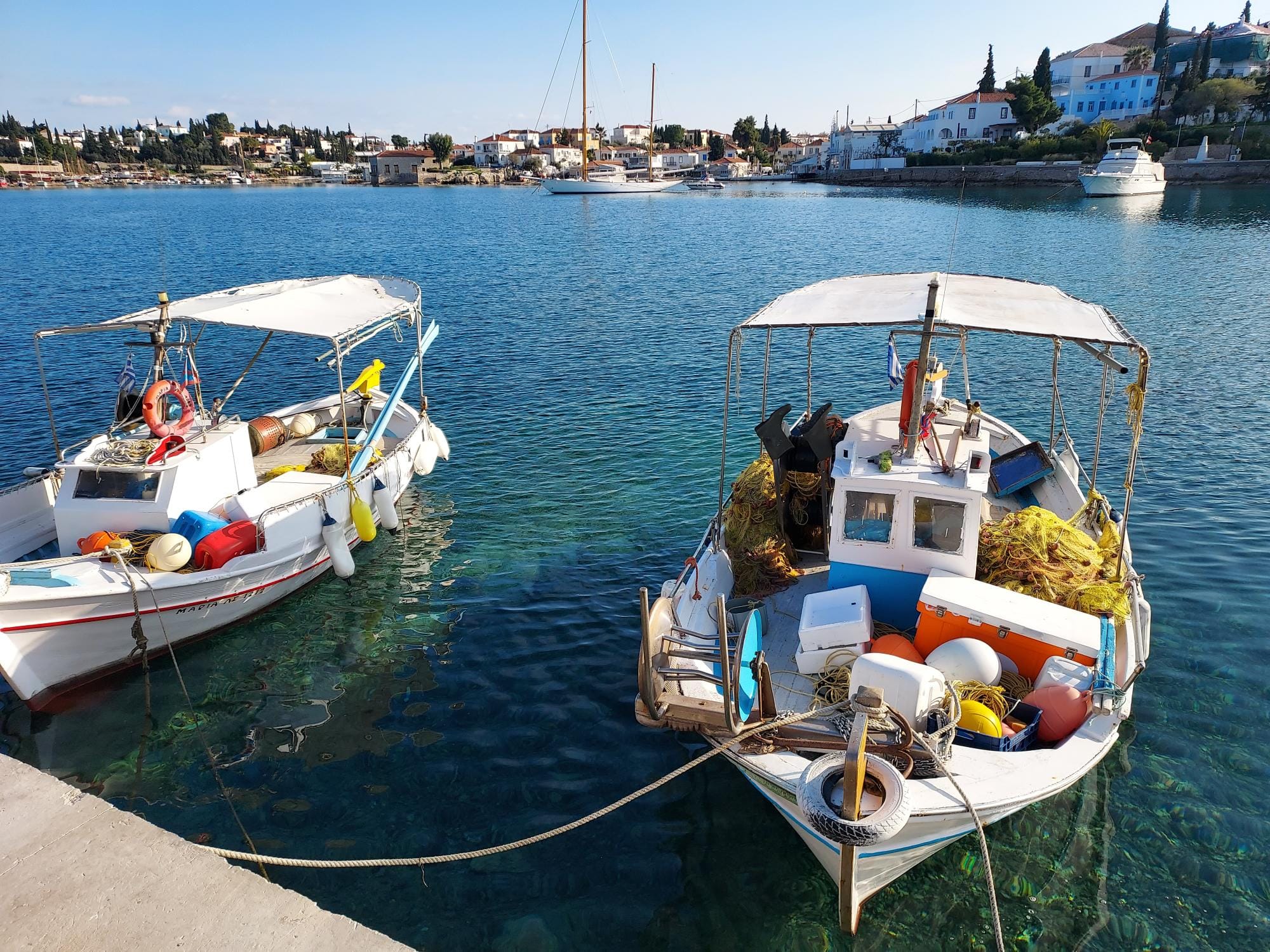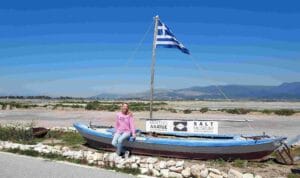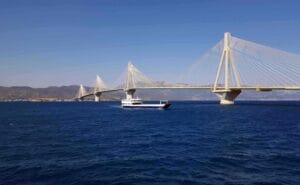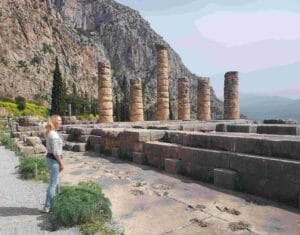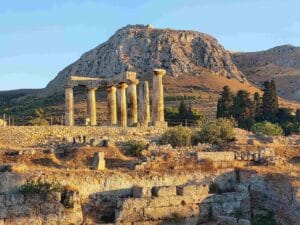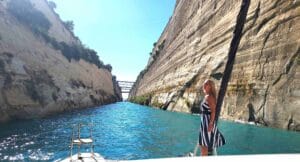We left the island of Hydra and its donkeys behind and sailed to another island belonging to the Saronic Islands: Spetses. We also visited the chic Porto Cheli, often called the Greek Saint-Tropez.
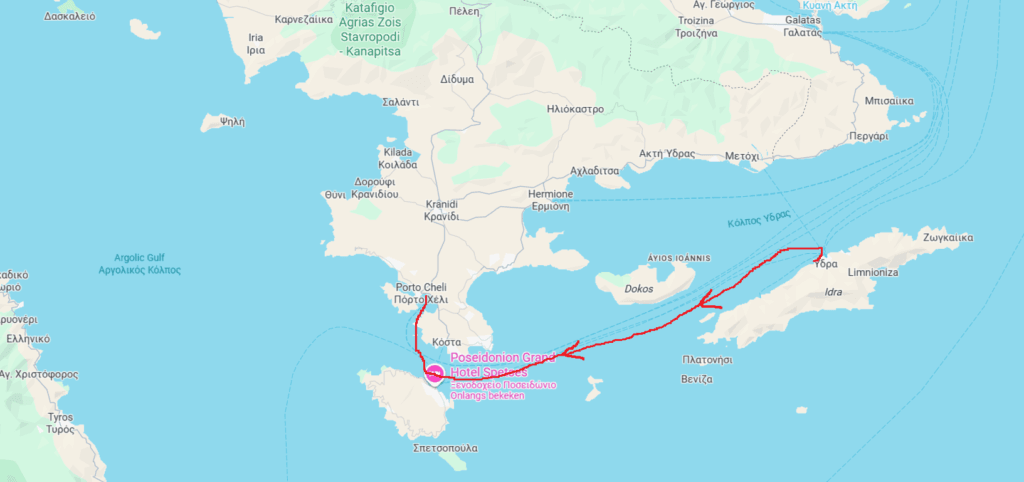
Spetses
On our sailing trip, we noticed that the mountains became a little less rugged compared to Hydra, and we also saw more fishermen along the way. Even after 4 years of sailing abroad, I still enjoy this: the craft of fishing is still very much alive here, even among the small boats. Sometimes we also come across former fishing boats on land with the slogan “All we see, is the sea.” I like that.
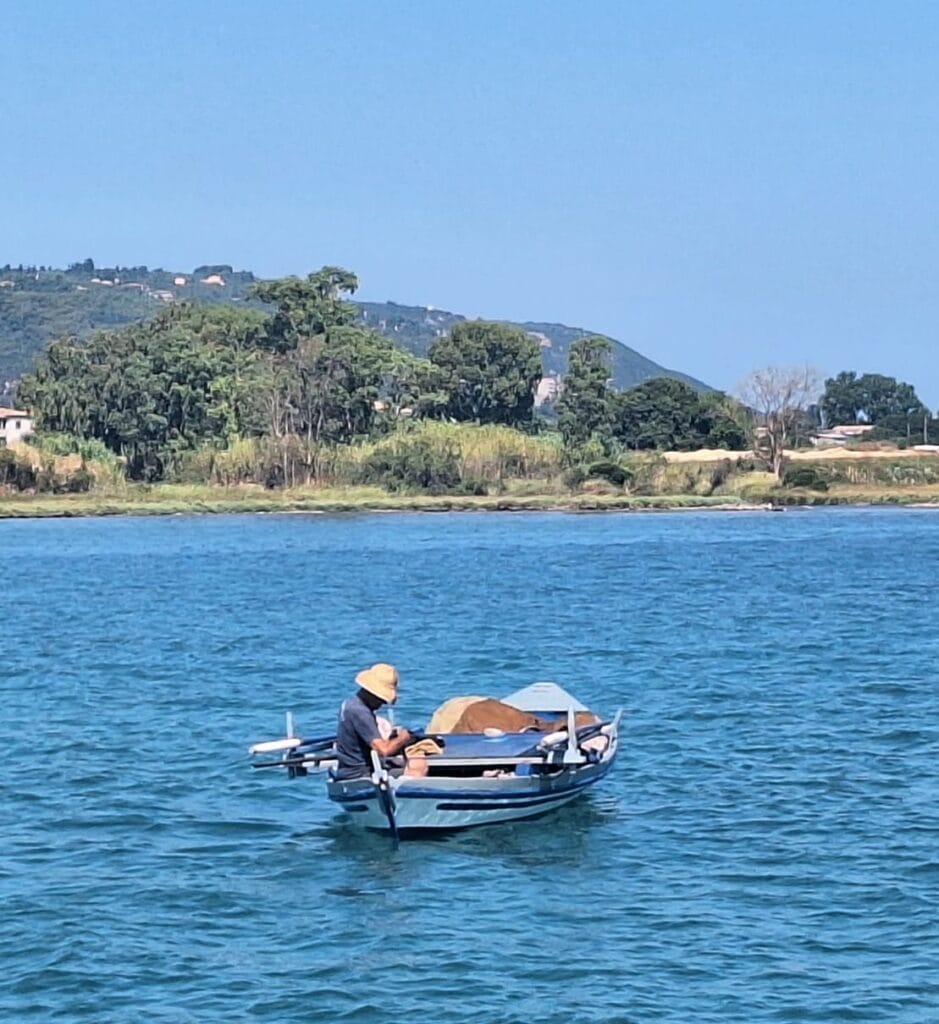

When we approached Spetses Town, also called Dapia, the beautiful capital of the island, we saw the colorful fishing boats lying there. That was in the quieter Palaio Limani (old harbor).
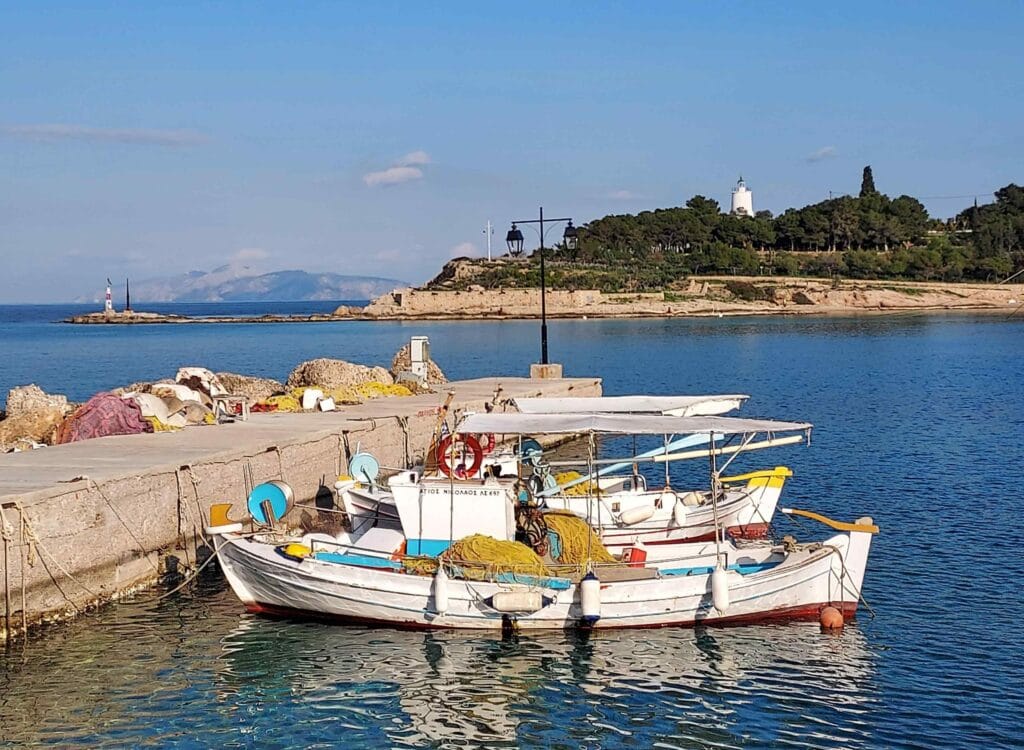
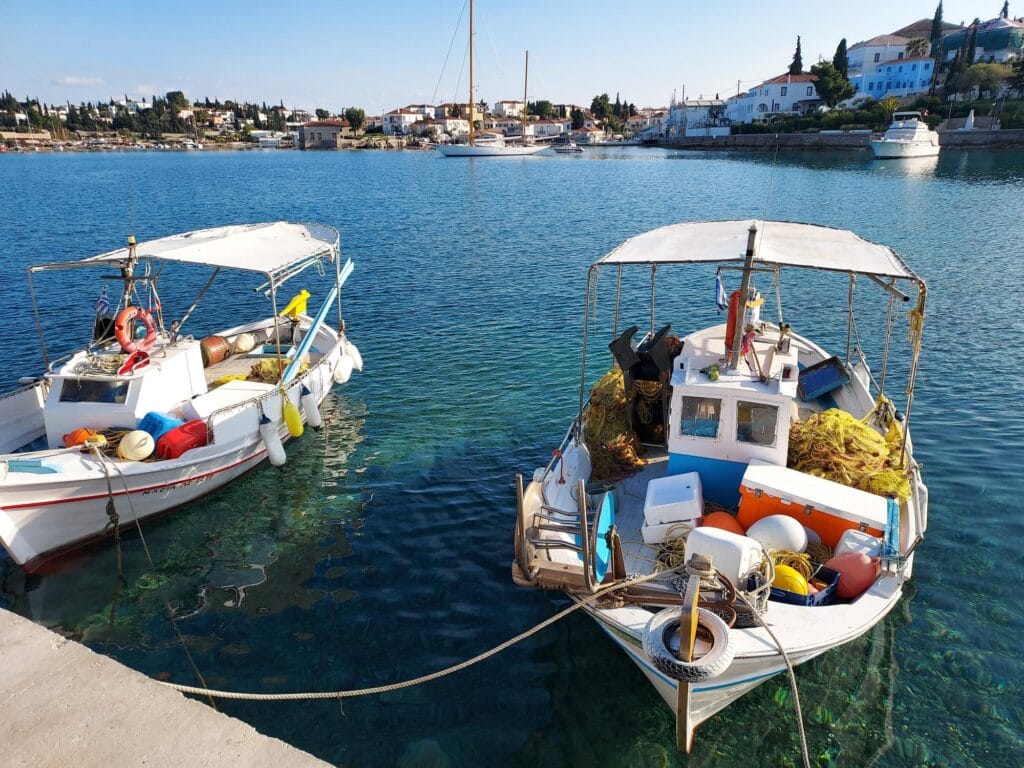
The main harbor, by contrast, is lively with traffic, restaurants, and shops, but still has a refined and elegant atmosphere. There is a large square with imposing mansions from the 18th and 19th centuries, built by wealthy shipowners and captains.
In Spetses Town, especially around Dapia Harbor, you also see old cannons displayed—silent witnesses to the glorious role the island played during the Greek War of Independence in 1821. These cannons were used to defend the harbor and the island against Ottoman attacks.
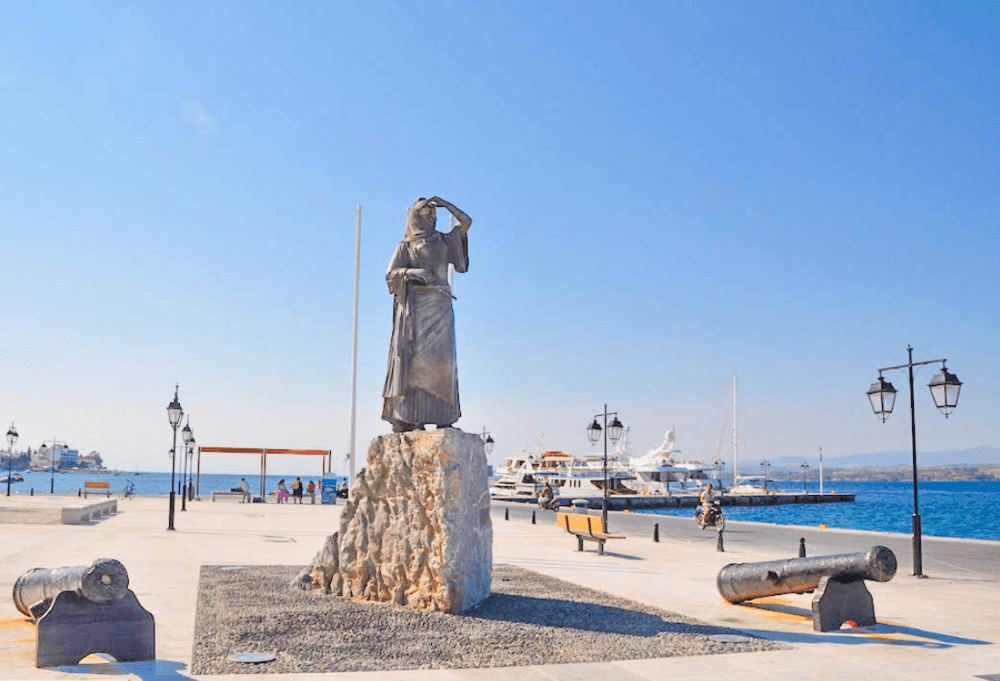
A national hero from this maritime history of the Greek War of Independence comes from Spetses, and her name is Laskarína Pinotsí. She is better known by her nickname, Bouboulina. She was the commander of her own warships. I found that fascinating and decided to dive into her background and personal history—it’s an incredible story!
Bouboulina
She was born in 1771 in a Turkish prison in Constantinople, the daughter of a Greek captain from Hydra who had been sentenced to death for participating in an earlier uprising against the Ottomans. Her mother fled to the island of Spetses, where Laskarina grew up.
In 1788 she married a ship captain, whom she accompanied at sea on various expeditions. Her husband died in 1798 when his ship was sunk by Turkish pirates. She later remarried another seafarer, Bouboulis, who tragically died in the same way.
Bouboulina, as she was henceforth called, suddenly became extremely wealthy, inheriting shipyards and a trading fleet. In 1821, when the War of Independence broke out, she used her own fortune to convert her merchant ships into warships. Among them was the Agamemnon, the largest ship during the revolution, with 18 cannons, which she personally commanded. She gathered men around her to form her own private army. Bouboulina paid and fed these men out of her own pocket and spent most of her fortune on the revolution, deploying her ships between 1821 and 1824 in numerous sea battles against the Turks.
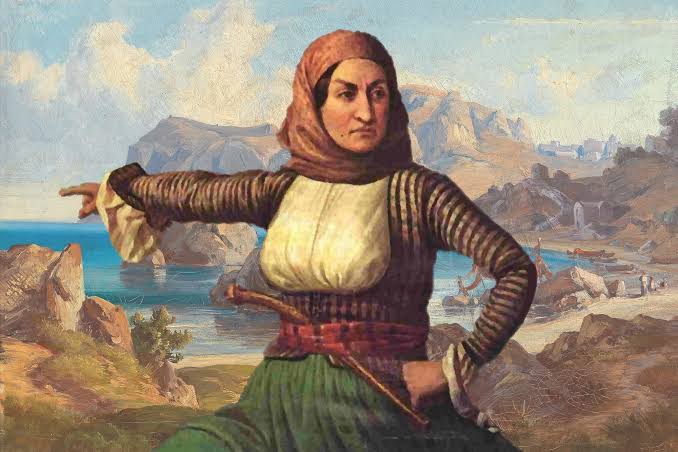
Bouboulina was regarded as a highly enthusiastic, deeply moral, and incredibly brave naval officer, commanding both her own ships and those of others. She heroically took part in the battles of Nafplion, Monemvassia, and Haradros. As a reward, the state granted her a house in Nafplion, but she returned it when she grew disillusioned with the political power struggles of the new nation.
Financially ruined, she returned to Spetses. Not long after, in 1825, she met her end there. One of her sons had eloped with a woman, whose father came to Bouboulina’s house demanding an explanation. He brought a large group of relatives with him, and a fight broke out. One of them fired a shot that struck Bouboulina directly in the forehead. She died instantly.
Film Location
Well, Bouboulina’s life reads like a movie (with a tragic ending, unfortunately), and today Spetses indeed often serves as a film location. But this is mainly due to the glamour it now exudes, thanks to its charming Greek streets, elegant neoclassical villas, and idyllic bays.
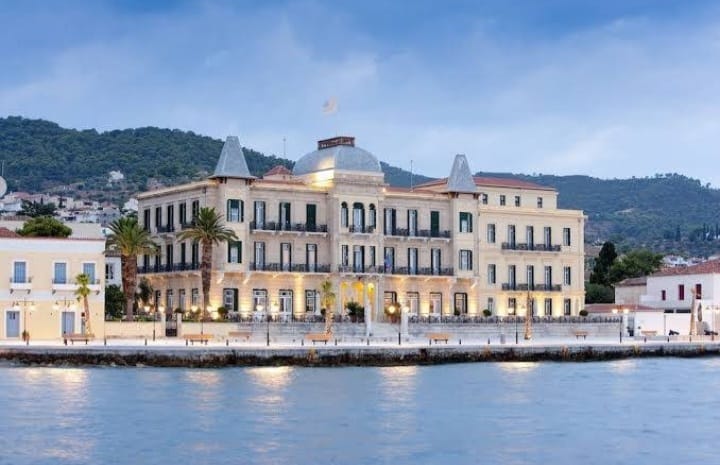
A well-known example is the Netflix film Glass Onion: A Knives Out Mystery (2022), in which Daniel Craig stars as detective Benoit Blanc. Large parts of the film were shot on Spetses, including scenes in Dapia Harbor and in a luxury villa on the coast.
One scene was even filmed on the quay where we moored. So of course we watched the movie while we were in Spetses ourselves—and we spotted the scene!
In the background you see the impressive Poseidonion Grand Hotel, which we also had a view of while watching the film.
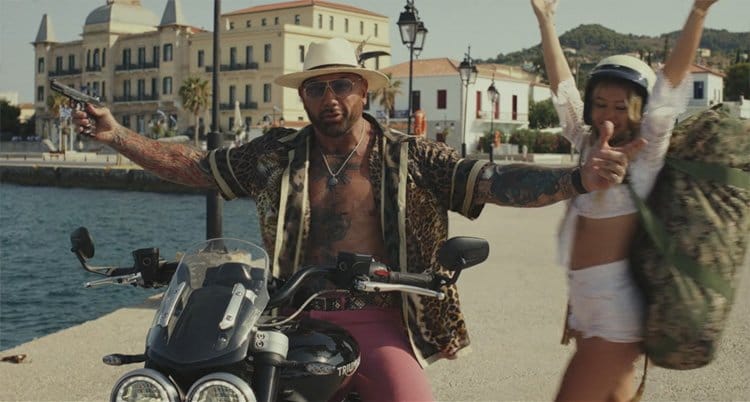
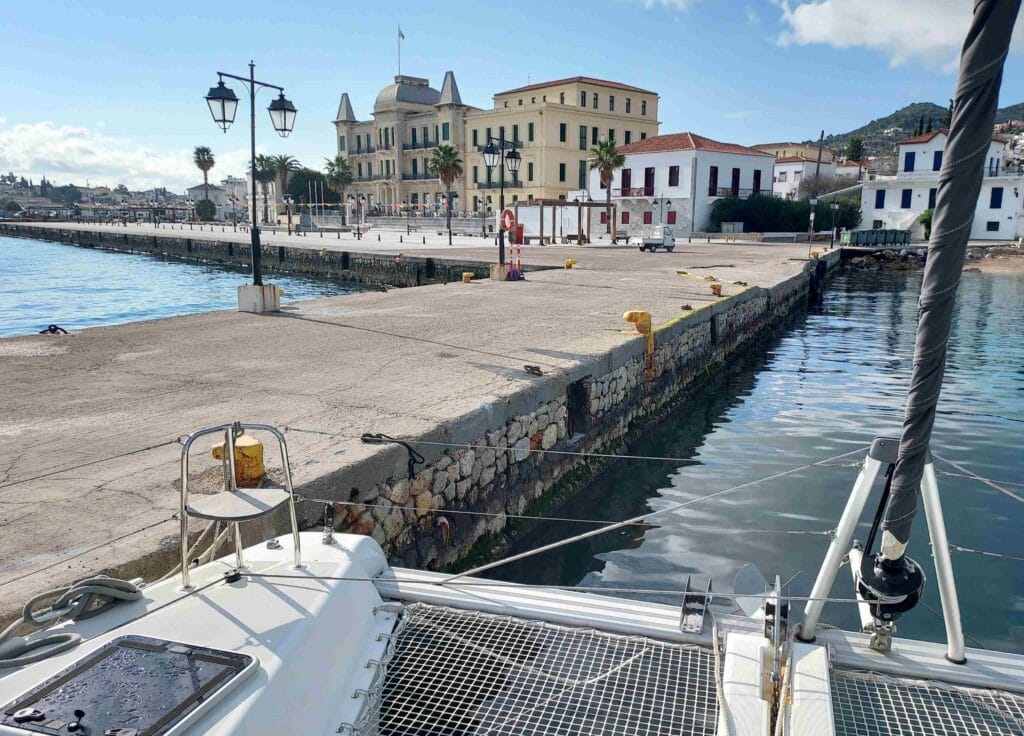
During filming, many islanders were involved as extras or support staff. It reportedly caused quite a stir on the island and gave Spetses international fame as a film location. A fun detail: the striking green three-wheeled vehicle (tricycle) belonging to the Poseidonion Hotel. Actress Kate Hudson was driven along the quay in this vehicle during the film.
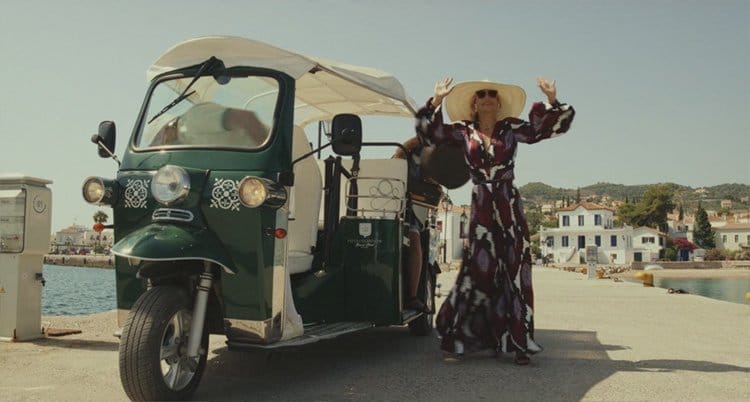
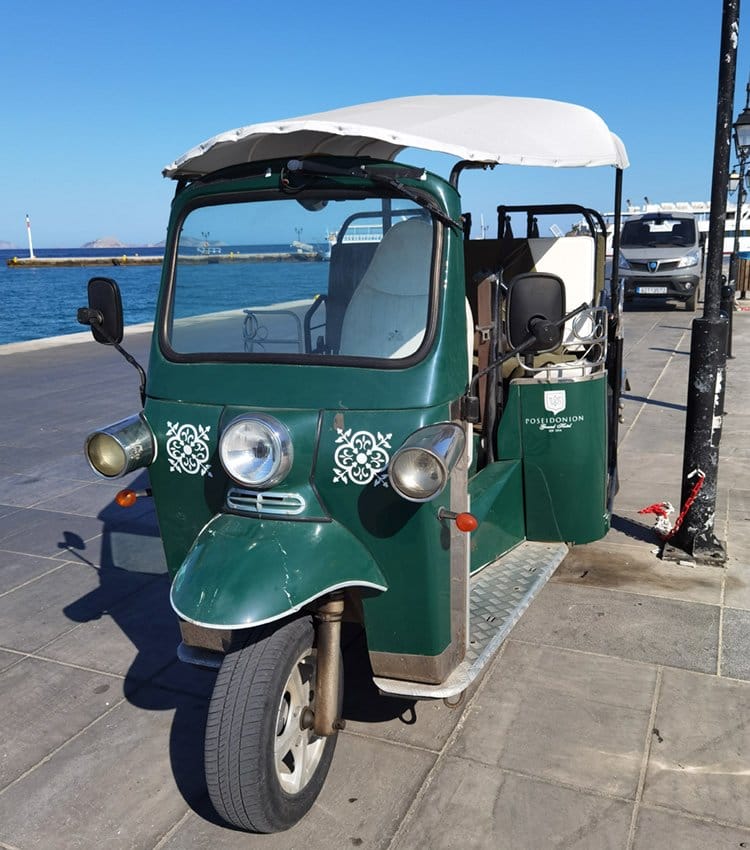
Porto Cheli and the Dutch Royal Couple’s House and Boat
After charming Spetses—with its mix of historic and traditional character on the one hand, and modern glamour and the film industry on the other—we continued by boat to Porto Heli (or Porto Cheli) on the mainland.
Porto Cheli is also known as the “Greek Saint-Tropez” because of the luxury villas, resorts, and yachts anchored in its bay. Famous Greeks and international celebrities own houses there.
Here you can see the holiday home of King Willem-Alexander of the Netherlands, as well as his boat (a Wajer 55, an 18-meter-long speedboat that cost €2 million).
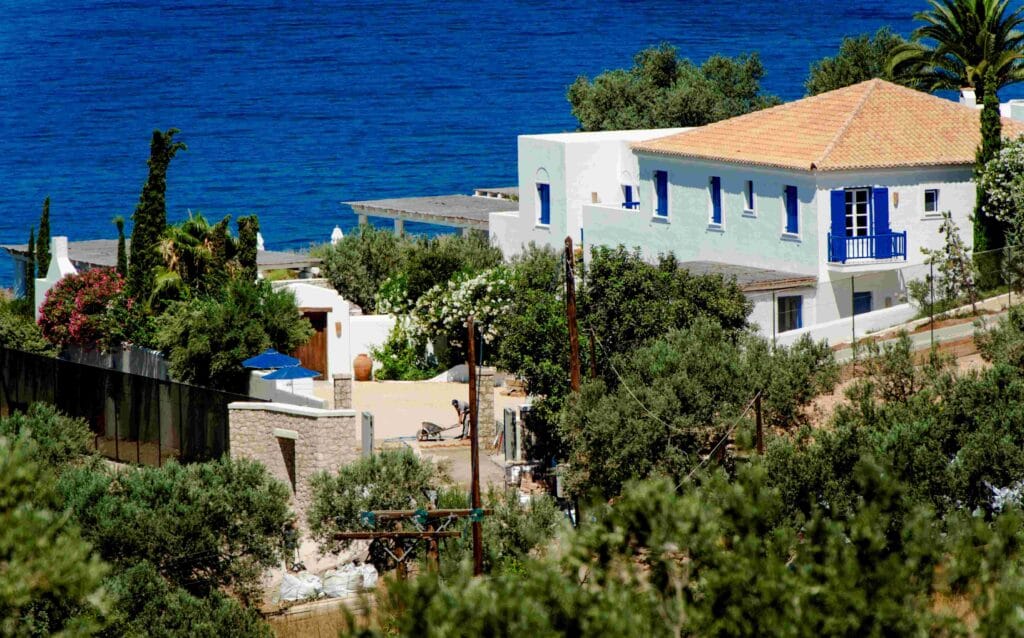
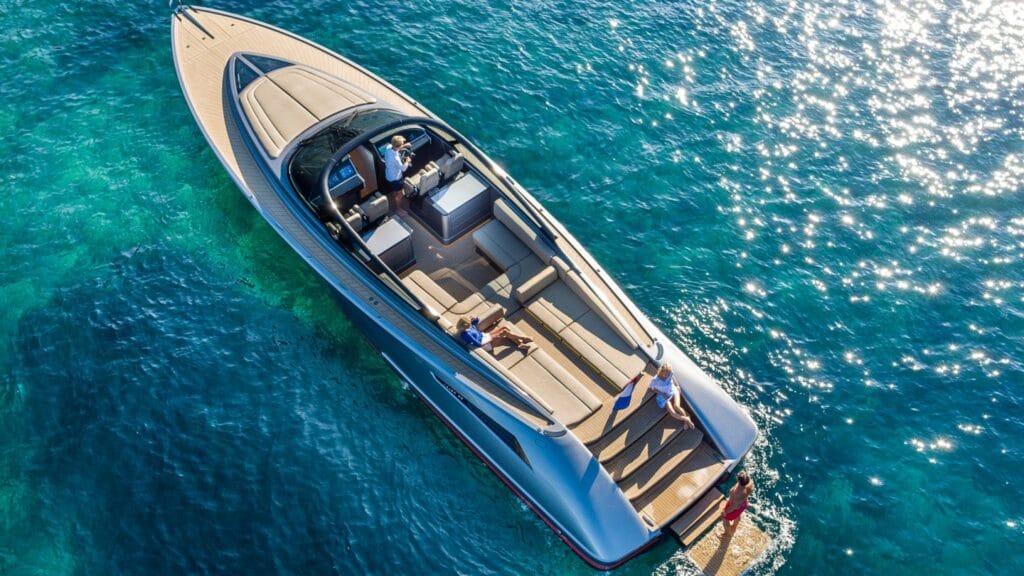
But despite the luxury, Porto Cheli still has an authentic Greek character, with small tavernas along the water. We had lunch there. And as we walked back to the boat (which of course was at anchor, since mooring in the harbor itself is unaffordable), we passed the quay where small fishing boats—just like at the start of this blog—were still active. This time, the fishermen were busy working on their nets.
